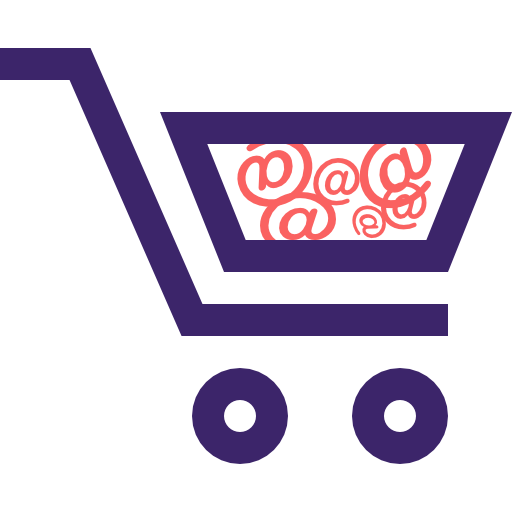Targeting
Audiences, targeting and signups
A few weeks ago we closed on our new house in Dublin. This weekend we’re going to one of those ‘home shows’ where people try and sell you all sorts of things for your home. We know there are some things we want to do with the house so we’re headed out to the convention centre this weekend. Tickets are “free” but they ask for contact information, including an email address.
Read MoreBack to the office!
I’m back in the office after a busy June. The 2 continent, 3 city tour was unexpectedly extended to a 4th city thus I was out most of last week as well.
What was I doing? We spent a week in Dublin, which is an awesome and amazing city and I love it a little bit more every time we visit. After Dublin I jetted off to Chicago, where I spoke at ActiveCampaign’s first user conference.
The talk I did for ActiveCampaign was about how we’re in the middle of a fundamental shift in how email is filtered, particularly at the consumer ISPs. In order reach the inbox. we need to think beyond IP or domain reputation. We need to stop thinking of filters as a way of sorting good mail from bad mail. I touched a little on these concepts in my What kind of mail do filters target? blog post.
The shift in filtering is changing how email reaches the inbox and what we can and should be monitoring. At the same time, the amount of data we can get back from the ISPs is decreasing. This means we’re looking at a situation when our primary delivery fixes can’t be based on feedback from the filters. This is, I think, going to be an ongoing theme of blog posts over the next few months.
The next trip was to spend 2 days onsite at a client’s office. These types of onsite training are intense but I do enjoy them. As this was mostly client specific, there isn’t much I can share. They did describe it as a masterclass in deliverability, so I think it was also intense for them.
That was the planned 2 continent, 3 city tour. The last city was a late addition of a more personal nature. We headed downstate to join my cousin and her family in saying goodbye to my uncle. He was an amazing man. A larger than life, literal hero (underwater EOD, awarded the silver star) whom I wish I had known better. Most of what I remember is how much he loved and adored my aunt.
I’ll be getting back into the swing of blogging over the next few days. It’s good to be back and not looking at traveling in the short term.
November 2016: The Month In Email
Happy December! Between #blackfriday, #cybermonday & #givingtuesday, pretty much everyone in the US has just survived a week of email from every brand and organization they’ve ever interacted with. Phew.
Is this still the best strategy for most senders? Maybe. But it’s always important to be adaptable and continue to evaluate and evolve your strategy as you move through the year.
As always, I continue to think about evolving our own strategies, and how we might best support senders and ESPs. One of the challenges we face when we talk to senders with deliverability questions is that so many of our answers fall into a nebulous “it depends” zone. We’re trying to articulate new ways to explain that to people, and to help them understand that the choices and details they specify at each point of their strategic planning and tactical execution have ramifications on their delivery. While “it depends” is still a correct answer, I’m going to try to avoid it going forward, and instead focus on exploring those choices and details with senders to help them improve deliverability.
In our community of deliverability and anti-abuse professionals, we are — as you’d expect — quite sensitive to unsolicited email that targets our industry. When an email circulates, even what seems like a reasonably well-thought-out email, it occasionally does not land well. Worse still are the various email-related product and service providers who try to legitimize B2B sales messaging as if it is something other than spam.
The takeaway from these discussions for senders is, as always: know your audience. This post about research from Litmus on millennials and spam is a great example of the kinds of things you might consider as you get to know your audience and how they prefer to communicate.
We also had a presidential election this month, one that made much of issues related to email, and it will be interesting to see how the candidates and parties use the email data they collected going forward.
In industry and security news, we saw over a million Google accounts breached by Android malware. We also saw some of the ramifications of a wildcard DNS entry from a domain name expiration — it’s an interesting “how things work” post if you’re curious. In other “how things work” news, we noted some of the recent changes AOL made to its FBL.
I answered an Ask Laura question about dedicated IP pools, and I have a few more queued up as well. As always, we want to know what questions are on the minds of our readers, so please feel free to send them over!
But my purchased list is TARGETED!!!
 I hear this all the time. But, y’know what? It’s BS. Total BS.
I hear this all the time. But, y’know what? It’s BS. Total BS.
In the last month, I’ve gotten “targeted” messages (that escaped my filters) from the following companies who purchased lists.
Don't like opt-outs? Target your program better.
I get a LOT of spam here. Most of it is marked and trivial to get rid of. Some of it is what I would call semi-legitimate. It’s a real product, but I never asked to receive any information from this company and am not actually part of their demographic. For one time things I just hit delete and move on. Life is too short to complain or opt out of every spam I get. (Tried that, got more mail)
But sometimes if the same sender keeps bothering me, I will send back an email asking them to cease contact. I recently had an occasion where someone sent an initial email trying to sell me bulk SMS, online video and other services. I ignored it because we’re not in the market for any of these services. A week later I get a followup asking why I hadn’t provided feedback to them and if there was a better person to talk to at the company. I looked for a way to opt-out of this message stream, but there wasn’t one. I send a reply telling them we were not interested in speaking to them and to please cease all communication. (“You didn’t receive feedback because I have no interest in talking to you. Please cease all future contact.” Admittedly that was terse, but it was polite.)
My request to cease communication was not well received, nor was it honored. Mind you, they first contacted me trying to sell me services that are totally off what we offer. When I asked them not to contact me, they turned it around that we’d lost business.
Email marketing not dead yet
If Forrester research is to be believe, email marketing is feeling better. In fact, it seems email marketing is more effective than ever.
Read MoreTargeting and Segmentation
MarketingSherpa has a great case study of a retailer that got a 208% higher conversion (purchase) rate for a targeted email sent to a small segment (10%) of their list.
Read MoreNo one harvests email addresses any more
There are a lot of people who assert that “no one” actually scrapes websites for email addresses any longer. My experience indicates this isn’t exactly true.
We have a rotating set of email addresses on our contact page. Every day we push out a new email address. Every day we expire addresses that were pushed out 7 days ago.
I can say, with 100% certainty, that there are people harvesting addresses off websites. The ads are reasonably “targeted.” Most of them are offering increased traffic, or the ability to monetize the website. Some are offering work from home.
I suppose you could call these targeted mails. After all, what website owner doesn’t want more traffic? Who wouldn’t want to make hundreds of dollars a day from the comfort of their own couch? What website owner doesn’t want their site submitted to 2700 different search engines?
Targeted spam is still spam. And having a rotating, expiring contact address has kept the amount of spam coming into our contact address low enough that the contact address is actually useable. 10 spams a month (for a 7 day old email address) is much more manageable than 1000 emails a month (for a 4 year old email address).
Customized for your profile?
With all the discussion about how daily deal emails are the silver bullet to making a profit on the Internet, I signed up for a couple of lists. Not only did I sign up for different lists, I also signed up for the same lists from different addresses.
One of those programs touts that they send me offers tailored to me. Except that the offers I get at Hotmail are different than the ones I get at Gmail are different from the ones I get elsewhere.
So how tailored is this really? In general there is no difference with how I interact with the mail in those various accounts, so that profile is the same. And, well, the person behind the addresses is all the same. If the ads were specially chosen for me, why am I getting different ones at different accounts? Is this particular marketer simply randomly assigning offers and claiming they’re targeted? How many other mailers claim to send ads tailored to my profile, and then just throw the profile out the window and send whatever they want to send today?
This isn’t to say that there aren’t a some marketers that do pay attention to recipient profiles. But I’m starting to wonder if the majority of “targeting” is more lip service than reality.
What do other people think?
Spam isn't a best practice
I’m hearing a lot of claims about best practices recently and I’m wondering what people really mean by the term. All too often people tell me that they comply with “all best practices” followed by a list of things they do that are clearly not best practices.
Some of those folks are clients or sales prospects but some of them are actually industry colleagues that have customers sending spam. In either case, I’ve been thinking a lot about best practices and what we all mean when we talk about best practices. In conversing with various people it’s clear that the term doesn’t mean what the speakers think it means.
For me, best practice means sending mail in a way that create happy and engaged recipients. There are a lot of details wrapped up in there, but all implementation choices stem from the answer to the question “what will make our customers happy.” But a lot of marketers, email and otherwise, don’t focus on what makes their recipients or targets happy.
In fact, for many people I talk to when they say “best practice” what they really mean is “send as much mail as recipients will tolerate.” This isn’t that surprising, the advertising and marketing industries survive by pushing things as far as the target will tolerate (emphasis added).
